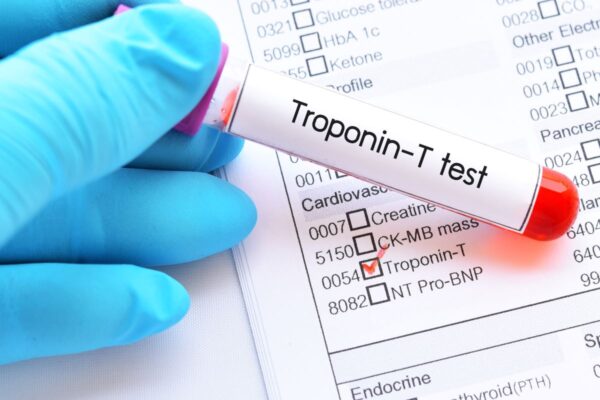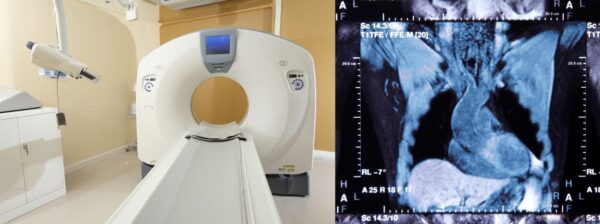Invasive Procedures May Not Be Needed to Investigate Mild Heart Attacks: Study
Patients may no longer need to endure invasive procedures to investigate mild heart attacks, according to a new study from Flinders University in South Australia.If a randomised control trial (RCT) is successful, the CT scan could become a preferred tool for doctors which could also reduce the risk of complications. The current preferred procedure is a coronary angiography, which involves threading a slender catheter through the body’s largest artery (aorta) via an artery in the wrist or groin. When it reaches the coronary arteries of the heart, an X-ray sensitive dye is injected through the catheter and then X-ray images are taken to see if any arteries are narrowed or blocked. Although the procedure only takes around 40 minutes, medical staff must monitor things like blood pressure, the pulse, breathing, and wound site regularly afterwards, with the patient needing up to six hours before being discharged. There are also a bevy of potential complications from the procedure including bleeding from the wound, allergic reaction to the contrast dye, heart arrythmia, heart attack, and stroke. Troponin is a protein that appears in the blood when heart muscles become damaged. (jarun011/Adobe Stock) Chief Investigator Associate Professor Sam Lehman, a practising cardiologist and academic with Flinders University’s College of Medicine and Public Health, said in a release on Oct. 3 that due to the increase in high-sensitivity troponin tests, which can identify damage to the heart muscle, more patients are being found to have heart damage and sent for coronary angiographies. “This is despite the fact that most patients with lower levels of troponin are not found to need surgery to reduce or remove a blockage,” he said. “Our current standard of care is based on evidence that was established in an earlier era, when our tests were less sensitive. The benefit of the current standard has not been established with the more modern troponin tests and has significant implications for rural and regional areas, where patients are often transferred to metropolitan centres, potentially unnecessarily.” The Trial and Expected Benefits The RCT will involve 3,000 patients and evaluate the safety of first-line investigations carried out by a non-invasive CT coronary angiography (CTCA) compared to an invasive coronary angiography (ICA). Over the 12-month period, patients with suspected acute coronary syndrome and low-level troponin elevation will be monitored for potential cardiovascular death, and new or recurrent damage to the heart. In addition, the trial will assess whether a CT angiography is a more suitable method with regards to bleeding, the potential for heart muscle injury and patient satisfaction. Through the trial, a machine learning algorithm will also be created to assist clinicians in deciding which diagnostic technique is most appropriate for each patient. Employing cardiac CT scans to investigate mild heart attacks could lower the risk of complications and minimise the need for patients to travel to metropolitan health facilitiies. (Tawesit/Adobe Stock) Lehman said the overall aim of the trial is to advance the evidence base for these procedures, as well as facilitate their translation into practice and policy. “Alongside a reduction in health care costs, there is potential for early CT coronary angiography to be a non-invasive alternative to ICA, leading to a reduction in ad hoc revascularisations (surgery to unblock the heart), reducing the potential for patient harm and providing for more accessible treatment throughout Australia,” he said. “Rural and remote areas often have less access to cardiac expertise that can inform care, with only 11.5 percent of cardiologists located in these geographic regions, despite 28 percent of Australia’s population living in these areas, potentially driving inappropriate treatment. “Changing the standard of care could drive more appropriate access to acute cardiac investigations and equitable health outcomes in regional and remote areas.” The trial—”Impact of non-invasive coronary angiography on suspected acute coronary syndromes with low concentration troponin elevation”—has been granted almost $1 million by the Medical Research Future Fund 2021 Cardiovascular Health Grant Opportunity, a government fund set up to support research into improved cardiovascular health for Australians.

Patients may no longer need to endure invasive procedures to investigate mild heart attacks, according to a new study from Flinders University in South Australia.
If a randomised control trial (RCT) is successful, the CT scan could become a preferred tool for doctors which could also reduce the risk of complications.
The current preferred procedure is a coronary angiography, which involves threading a slender catheter through the body’s largest artery (aorta) via an artery in the wrist or groin. When it reaches the coronary arteries of the heart, an X-ray sensitive dye is injected through the catheter and then X-ray images are taken to see if any arteries are narrowed or blocked.
Although the procedure only takes around 40 minutes, medical staff must monitor things like blood pressure, the pulse, breathing, and wound site regularly afterwards, with the patient needing up to six hours before being discharged.
There are also a bevy of potential complications from the procedure including bleeding from the wound, allergic reaction to the contrast dye, heart arrythmia, heart attack, and stroke.

Chief Investigator Associate Professor Sam Lehman, a practising cardiologist and academic with Flinders University’s College of Medicine and Public Health, said in a release on Oct. 3 that due to the increase in high-sensitivity troponin tests, which can identify damage to the heart muscle, more patients are being found to have heart damage and sent for coronary angiographies.
“This is despite the fact that most patients with lower levels of troponin are not found to need surgery to reduce or remove a blockage,” he said.
“Our current standard of care is based on evidence that was established in an earlier era, when our tests were less sensitive. The benefit of the current standard has not been established with the more modern troponin tests and has significant implications for rural and regional areas, where patients are often transferred to metropolitan centres, potentially unnecessarily.”
The Trial and Expected Benefits
The RCT will involve 3,000 patients and evaluate the safety of first-line investigations carried out by a non-invasive CT coronary angiography (CTCA) compared to an invasive coronary angiography (ICA).
Over the 12-month period, patients with suspected acute coronary syndrome and low-level troponin elevation will be monitored for potential cardiovascular death, and new or recurrent damage to the heart.
In addition, the trial will assess whether a CT angiography is a more suitable method with regards to bleeding, the potential for heart muscle injury and patient satisfaction.
Through the trial, a machine learning algorithm will also be created to assist clinicians in deciding which diagnostic technique is most appropriate for each patient.

Lehman said the overall aim of the trial is to advance the evidence base for these procedures, as well as facilitate their translation into practice and policy.
“Alongside a reduction in health care costs, there is potential for early CT coronary angiography to be a non-invasive alternative to ICA, leading to a reduction in ad hoc revascularisations (surgery to unblock the heart), reducing the potential for patient harm and providing for more accessible treatment throughout Australia,” he said.
“Rural and remote areas often have less access to cardiac expertise that can inform care, with only 11.5 percent of cardiologists located in these geographic regions, despite 28 percent of Australia’s population living in these areas, potentially driving inappropriate treatment.
“Changing the standard of care could drive more appropriate access to acute cardiac investigations and equitable health outcomes in regional and remote areas.”
The trial—”Impact of non-invasive coronary angiography on suspected acute coronary syndromes with low concentration troponin elevation”—has been granted almost $1 million by the Medical Research Future Fund 2021 Cardiovascular Health Grant Opportunity, a government fund set up to support research into improved cardiovascular health for Australians.












